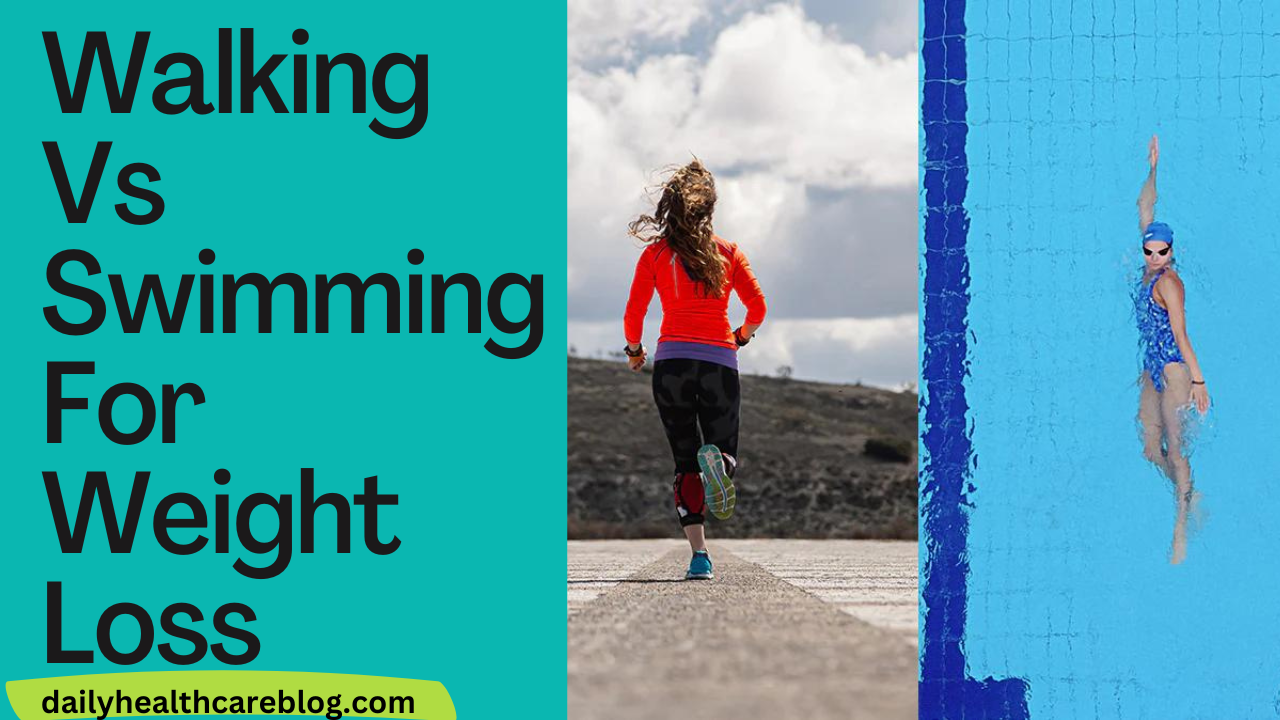Walking vs Swimming for Weight Loss: A Comprehensive Guide
When it involves weight loss, workout is an critical a part of the equation. Two famous forms of exercise that humans regularly recall are strolling and swimming. Each has its precise blessings and drawbacks, and expertise these can help making a decision that’s exceptional appropriate for your weight loss desires. In this distinct guide, we can discover the advantages, calorie-burning potential, health influences, and practicalities of on foot and swimming for weight loss.
Introduction
Weight loss is a multifaceted manner that includes a mixture of proper vitamins and regular bodily hobby. While there are numerous styles of workout, taking walks and swimming stand out as handy and powerful options. This article will compare walking and swimming, inspecting their blessings and downsides to help you determine which workout is probably extra powerful on your weight reduction journey.
Understanding Walking Vs Swimming For Weight Loss

The Role of Exercise in Weight Loss
Exercise is crucial for weight loss due to numerous reasons:
– Calorie Burn: Physical sports help burn calories, contributing to a calorie deficit.
– Metabolism Boost: Regular workout can increase your metabolic price.
– Muscle Preservation: Exercise facilitates keep muscle tissues even as dropping fats.
– Overall Health: Exercise reduces the danger of chronic illnesses, improves mental health, and complements universal properly-being.
Overview of Walking and Swimming
Walking
– Accessibility: Walking can be done almost anywhere and requires no special equipment.
– Ease of Starting: It is a natural movement that does not require learning new skills.
– Impact Level: Walking is a low-impact exercise, making it suitable for all fitness levels.
Swimming
– Full-Body Workout: Swimming engages multiple muscle groups simultaneously.
– Joint-Friendly: Swimming is a very low-impact exercise, ideal for people with joint issues.
– Skill Requirement: Basic swimming skills and access to a pool are necessary.
The Benefits of Walking for Weight Loss

Accessibility and Convenience:
– Anywhere, Anytime: Walking can be done in your neighborhood, parks, or on a treadmill.
– Minimal Equipment: Only a pair of good walking shoes is needed.
Health Benefits
– Cardiovascular Health: Walking strengthens the heart and improves circulation.
– Bone and Muscle Strength: As a weight-bearing exercise, it helps strengthen bones and muscles.
– Mental Health: Walking can reduce stress, anxiety, and symptoms of depression.
Calorie Burn
– Caloric Expenditure: On average, walking burns about 100 calories per mile, depending on speed, terrain, and individual body weight.
How to Get Started with Walking
1. Set a Schedule: Aim for at least 30 minutes of walking most days of the week.
2. Invest in Good Footwear: Choose comfortable, supportive walking shoes.
3. Start Slow: Begin at a comfortable pace and gradually increase speed and distance.
4. Track Your Progress: Use a pedometer or a smartphone app to monitor your steps and distance.
Tips for Effective Walking
– Maintain Good Posture: Keep your back straight and shoulders relaxed.
– Use Your Arms: Swing your arms to help propel you forward.
– Vary Your Routes: Keep walks interesting by exploring new paths.
– Include Intervals: Alternate between brisk walking and a slower pace to increase calorie burn.
The Benefits of Swimming for Weight Loss

Full-Body Workout
– Muscle Engagement: Swimming works on the arms, legs, core, and back muscles.
– Flexibility and Coordination: It enhances overall body coordination and flexibility.
Health Benefits
– Cardiovascular Improvement: Swimming strengthens the heart and lungs.
– Muscle Strength and Endurance: Builds muscular endurance and strength.
– Mental Relaxation: The calming effects of water can reduce stress and improve mood.
Calorie Burn
– Caloric Expenditure: Swimming can burn between 400-700 calories per hour, depending on the stroke and intensity.
How to Get Started with Swimming
1. Find a Pool: Look for local community centers, gyms, or swim clubs with pool access.
2. Learn the Basics: Take swimming lessons if you are a beginner to learn proper techniques.
3. Get the Right Gear: Use a comfortable swimsuit, goggles, and a swim cap.
4. Start Slowly: Begin with shorter sessions and gradually increase the duration and intensity.
Tips for Effective Swimming
– Warm Up Properly: Always start with a warm-up to prepare your muscles.
– Focus on Technique: Proper form can increase efficiency and reduce the risk of injury.
– Mix Strokes: Use different swimming strokes to work various muscle groups.
– Cool Down: Finish with a cool-down session to relax your muscles.
Comparing Walking and Swimming
To make an informed decision, let’s compare walking and swimming across various factors:
| Feature | Walking | Swimming |
|---|---|---|
| Accessibility | High: Can be done almost anywhere | Moderate: Requires access to a pool |
| Calorie Burn | Moderate: ~100 calories per mile | High: 400-700 calories per hour |
| Impact on Joints | Low impact | Very low impact |
| Muscle Engagement | Primarily lower body | Full-body workout |
| Skill Requirement | Low: Natural and easy to do | Moderate: May require learning techniques |
| Cost | Low: Minimal equipment needed | Variable: Pool access fees, equipment cost |
| Weather Dependency | Can be done in most weather conditions | Typically done indoors |
| Social Aspect | Can be a solo or group activity | Often a solo activity |
Steps to Incorporate Walking and Swimming into Your Routine

Combining Both for Maximum Benefit
1. Weekly Schedule: Alternate between walking and swimming to avoid monotony and reduce the risk of overuse injuries.
2. Intensity Variation: Include different intensities like brisk walking or interval swimming to keep your workouts challenging and effective.
3. Rest and Recovery: Ensure you have rest days to allow your muscles to recover and grow.
Sample Weekly Plan
| Day | Activity | Duration |
|---|---|---|
| Monday | Brisk Walking | 45 minutes |
| Tuesday | Swimming (Freestyle) | 30 minutes |
| Wednesday | Rest or Light Yoga | 30 minutes |
| Thursday | Interval Walking (fast/slow) | 40 minutes |
| Friday | Swimming (Mixed Strokes) | 45 minutes |
| Saturday | Nature Walk | 60 minutes |
| Sunday | Rest | N/A |
FAQs about Walking and Swimming for Weight Loss
Can I lose weight by means of strolling alone?
Yes, taking walks can be powerful for weight reduction, particularly when blended with a wholesome weight-reduction plan. Consistency is fundamental to seeing results.
Is swimming greater effective than on foot for burning energy?
Generally, swimming burns extra energy consistent with hour compared to strolling, making it potentially more effective for weight loss.
How quickly will I see outcomes from walking or swimming?
Results vary based on person elements like food plan, depth, and consistency. Generally, you can begin noticing changes within some weeks to multiple months.
Can I swim if I don’t realize how?
Yes, but it’s beneficial to take swimming classes to make sure safety and effectiveness.
What’s better for joint health?
Swimming is commonly better for joint fitness because of its low-impact nature, making it a perfect alternative for those with joint problems or accidents.
Conclusion
Walking and swimming are both excellent physical games for weight reduction, each imparting precise advantages. Walking is quite reachable and easy to incorporate into day by day lifestyles, whilst swimming gives a high-calorie burn and a full-frame exercise with minimum joint impact. By incorporating each activities into your recurring, you may revel in a balanced and effective method to weight reduction.
